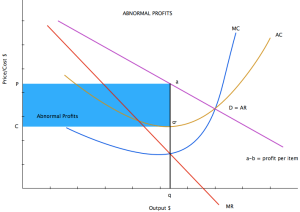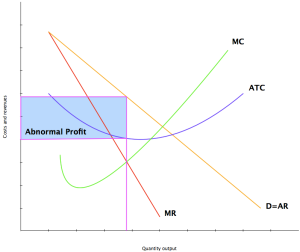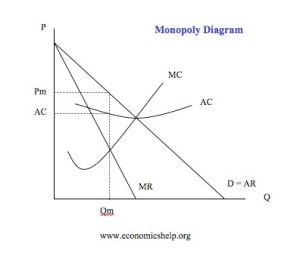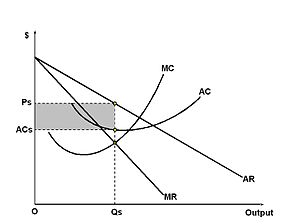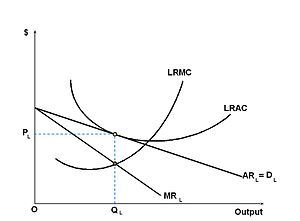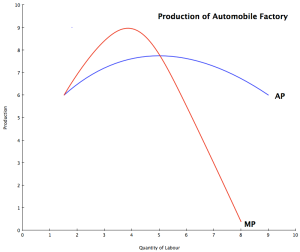1a. ‘Economics is primarily concerned with the allocation of scarce resources which have alternative uses.’ Use a PPC to explain this statement.
Economics is the study of how scare resources are or should be used. Resources are limited, however always desired by the market. This is because it is the key to the “factors of production”, which all three are required for the production of any good or service that might be transacted in the economy. “Factors of production”, are based on three types of resources, land, labour, and capital. These scarce resources are always desired by the market however limited therefor chosen to be allocated using the study of economics.
A typical demonstation of the allocation of scarce resources, can be shown using a production possibility curve. Lets take the production of bread and guns of Japan and North Korea as an example. This PPC is demonstrated given that Japan and North Korea has the same amount of resources, which can be invested in either the production of bread or guns.
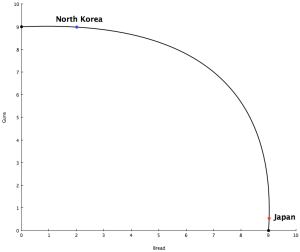
As you can see North Korea (blue dot) is aligned on the curve more on guns (y-axis). This means that North Korea allocates its resources mostly on guns, while the remaining is for bread. This is because North Korea invests more resources on strengthening their military (guns), instead of feeding their citizens (bread). Japan (red dot) is aligned on the curve more on breads (x-axis). This means that Japan allocates its resources more on bread, while the remaining is for guns. This is because Japan doesn’t hold an military, instead a self-defense force which means that they aren’t required to strengthen their power. Since they allocate a small amount of resources on guns, the remaining can be invested towards the production of bread. Since the set amount of resources can be used either for guns or bread, it is up for each countries economics, whether how they allocate their resources.
Knowledge on the PPC
– If the point is inside the curve, it means that the resources aren’t used completely efficiently (part of the resources are on idle).
– Not all PPC’s are curved, if the axes are similar factors (i.e. tangerine and oranges), then the PPC would be linear.
1b. Discuss the view that governments is more effective in the allocation of scarce resources than the free market.
Whether the government should intervene inorder to maximize efficiency of the allocation of resource in a market, has always been a debated topic in economics. From an laissez-faire point of view, government intervention is considered to be detrimental, and that free markets can hold the most efficient yet effective allocation of scarce resources. In a free market, individuals decide on the three main questions of economics: “what should be produced?”, “for whom should it be produced?” and “how should we produce”. By not having government intervention, individuals have the motivation to work hard for their wealth. Inorder to maximize profit, the market reacts quickly to meet the needs of the people/consumers. As in a command economy with complete government intervention, everyone is treated equally. Hard work isn’t rewarded therefor individuals lack motivation to meet the needs of the people/consumer. Although the government does give orders to companies so that the market meets the needs of the people/consumer, it is very inefficient and time consuming. Some say that free markets result in inefficiencies in the allocation of resources, whereby certain goods are over-produced while others are under-produced. Although this is true, it is always being modified by individual companies that thrive to maximize their profit.
